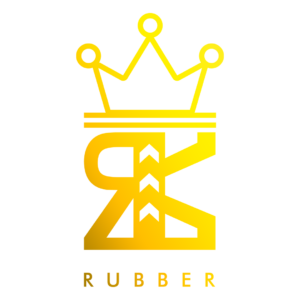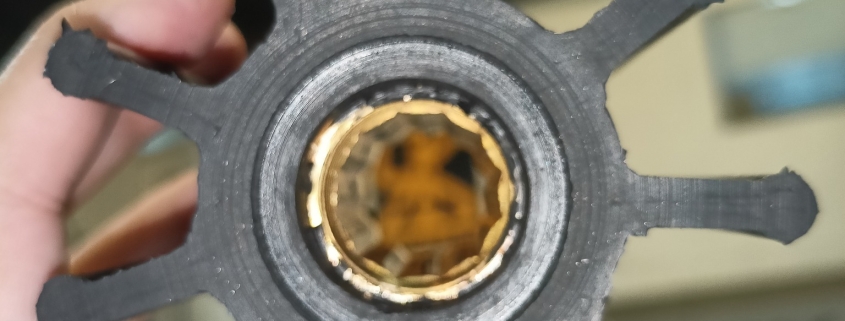Elevating Industrial Rubber Manufacturing with Butyl Compound Material
The development and production of synthetic rubber has revolutionized the manufacturing of industrial rubber products. Among the many types of synthetic rubber available, butyl rubber has gained prominence due to its superior impermeability to gas diffusion, good flex properties, and resistance to air permeability. Butyl rubber is a copolymer of isobutylene and isoprene, produced by polymerization of 98% isobutylene and 2% isoprene, and it finds use in a wide range of industrial applications.
This article explores butyl rubber’s various properties and characteristics, highlighting its potential to elevate the industrial rubber manufacturing industry. It will delve into the history and development of this versatile compound material, examining its supply and incidents during its production. Additionally, the article will examine the different applications of butyl rubber, from adhesive and sealant production to tire manufacturing and pharmaceutical stoppers, showcasing the many benefits this material can offer to the industry.
By the end of this article, readers will have gained a deeper understanding of the importance of butyl rubber in industrial manufacturing and its potential to take the industry to new heights.
Overview
The section provides an overview of a significant development in synthetic polymers that have revolutionized multiple industries with their exceptional properties and diverse applications. Butyl compound material, a type of synthetic rubber, has been widely used due to its excellent impermeability to gas diffusion, good flex properties, and impermeability to air. It is produced by polymerization of 98% isobutylene and 2% isoprene and has found applications in adhesives, agricultural chemicals, fiber optic compounds, ball bladders, O-rings, caulks and sealants, cling film, electrical fluids, lubricants, paper and pulp, personal care products, pigment concentrates, and rubber and polymer modification, among others.
Compared to other rubber compounds, butyl rubber has several advantages and disadvantages. It has excellent impermeability to gas diffusion, making it an ideal choice for inner liners inside pneumatic tubeless tires and the inner tube in older tires. Its good flex properties also make it a suitable material for use in speakers and bladders in sporting balls. However, it has low resilience and poor resistance to heat aging, limiting its use in certain applications. Future advancements in synthetic polymers will likely lead to the development of new and improved rubber compounds that overcome these limitations and offer even better properties.
In conclusion, the development of butyl compound material has revolutionized multiple industries by offering exceptional properties and diverse applications. This synthetic rubber has found uses in adhesives, agricultural chemicals, fiber optic compounds, ball bladders, O-rings, caulks and sealants, cling film, electrical fluids, lubricants, paper and pulp, personal care products, pigment concentrates, rubber and polymer modification. While it has certain advantages and disadvantages compared to other rubber compounds, future advancements will likely lead to the developing new and improved materials that offer even better properties.
Properties and Characteristics
This section highlights the unique and diverse properties of a synthetic copolymer of isobutylene with isoprene, known as butyl rubber. This material has been widely adopted as an essential component in producing adhesives, electrical fluids, personal care products, and pharmaceutical stoppers, among others, due to its exceptional impermeability to gas diffusion and flexibility, making it an indispensable material in various industries.
- Butyl rubber is highly resistant to chemical attack, making it an ideal material for use in environments where exposure to harsh chemicals is common. It also has excellent gas impermeability, which makes it a popular choice for applications where preventing the diffusion of gases is crucial.
- Flexibility is another characteristic that makes butyl rubber such a versatile material. Its unique molecular structure allows it to maintain its shape and size even when subjected to changes in temperature or pressure. This makes it ideal for applications where flexibility is essential, such as in producing seals, gaskets, and adhesives.
- In addition to its chemical resistance, gas impermeability, and flexibility, butyl rubber is also highly durable. It has excellent resistance to weathering and UV radiation, making it ideal for use in outdoor applications. Its durability also makes it a popular choice for producing sporting goods, such as bicycle inner tubes and ball bladders.
The unique combination of butyl rubber properties and characteristics makes it an indispensable material in a wide range of industries. Its chemical resistance, gas impermeability, flexibility, and durability make it a popular choice in adhesives, electrical fluids, personal care products, and pharmaceutical stoppers, among other applications.
Applications
Butyl rubber’s unique properties and characteristics have led to its widespread adoption in various industries. One of the primary uses of butyl rubber is in producing tire inner tubes due to its excellent impermeability to gas diffusion and good flex properties. However, it is not limited to the tire industry, with applications ranging from adhesives and agricultural chemicals to personal care products and electrical fluids.
One of the advantages of butyl rubber is its impermeability to air, making it an ideal material for pharmaceutical stoppers and seals. It is also commonly used in producing sporting goods such as ball bladders, cling film, and bicycle inner tubes due to its excellent air retention properties. Additionally, butyl rubber has been used for insulating glass units in commercial and residential construction, providing an air and moisture seal.
Looking toward the future, the demand for butyl rubber will continue to grow as industries seek out materials with superior sealing and air retention properties. As such, butyl rubber is likely to remain a key component in tire manufacturing and the production of pharmaceuticals, sporting goods, and construction materials. With its diverse range of applications and unique properties, butyl rubber is a material that will continue to play an important role in various industries for years to come.
History and Development
The origins and progression of the development of butyl rubber, a unique synthetic polymer with excellent impermeability and good flex properties, can be traced back to the discovery of isobutylene by Michael Faraday in 1825. However, it was not until 1931 when the BASF unit of IG Farben first developed polyisobutylene (PIB). Later, in 1937, butyl rubber was created by researchers at Standard Oil of New Jersey’s laboratory. Since then, butyl rubber has become a staple in various industries, including tire manufacturing, construction, and pharmaceuticals.
The development of butyl rubber has seen several innovation milestones over the years. One of the most significant milestones was the development of halo butyl rubber in the 1950s and 1960s, which allowed for higher curing rates and vulcanization with other rubbers. Another milestone was the creation of polyisobutenylsuccinic anhydride (PIBSA) by reacting PIB with maleic anhydride. PIBSA could then be converted into polyisobutenylsuccinimides (PIBSI) by reacting it with various ethyleneamines. These innovations have expanded the applications of butyl rubber and increased its global market share.
The key players in the production and supply of butyl rubber include ExxonMobil and Polymer Corporation, which account for most global supply. The global market trends for butyl rubber indicate a steady growth rate, driven by the increasing demand for high-quality rubber products in various industries. As innovations and advancements continue to emerge, the future of butyl rubber looks promising, with the potential for continued success and growth.
Supply and Incidents
Despite its excellent impermeability and good flex properties, the widespread use of butyl rubber in various industries has led to incidents such as the 2004 court case between BASF Corp. and the United States and the biggest UK pollution incident for decades involving a release of butyl acrylate from a chemical plant in 2013. These incidents have raised concerns about the environmental impact of butyl rubber manufacturing. As a result, safety regulations have been implemented to minimize the risk of such incidents.
To address these concerns, efforts have been made to explore alternative materials that can replace butyl rubber in various applications. For example, in the tire industry, silica and carbon black have been identified as potential substitutes for butyl rubber in inner liners of tubeless tires. Using these materials can improve fuel efficiency and reduce the environmental impact of tire manufacturing. Other synthetic rubbers such as ethylene-propylene-diene monomer (EPDM) and styrene-butadiene rubber (SBR), have been used as alternatives to butyl rubber in various applications.
Despite the safety regulations and efforts to find alternative materials, butyl rubber remains a popular choice in many industries due to its unique properties. However, manufacturers need to continue to prioritize safety and environmental impact in their production processes. By doing so, they can minimize the risk of incidents and ensure the long-term sustainability of their operations.
Conclusion
In conclusion, butyl rubber has proven to be a valuable compound material for elevating the industrial rubber manufacturing industry. Its excellent impermeability to gas diffusion, good flex properties, and impermeability to air make it versatile for various applications such as adhesive and sealant production, tire manufacturing, and pharmaceutical stoppers.
The history and development of butyl rubber have made it a reliable and consistent material in the industry. It has surpassed many challenges and incidents, including the shortage of raw materials and the development of alternative materials. As the industry continues to evolve, the potential of butyl rubber remains high, offering endless possibilities for innovation and growth.

